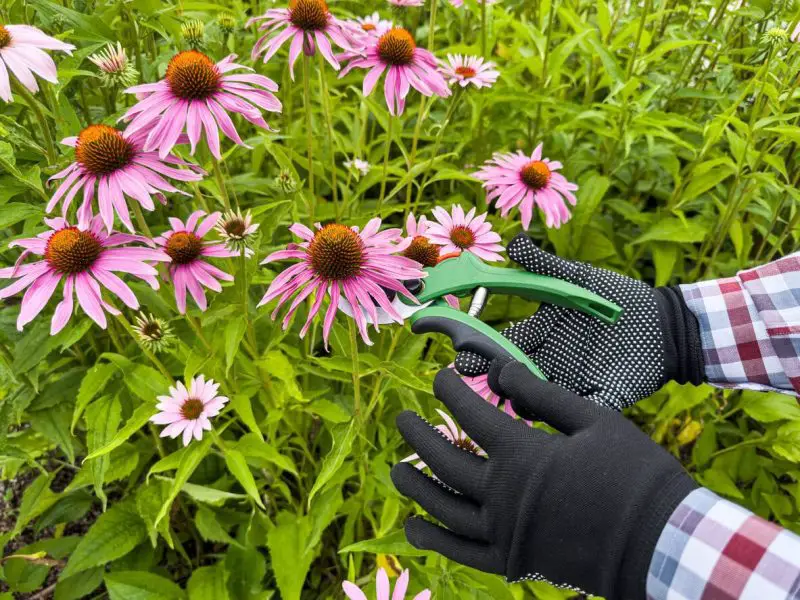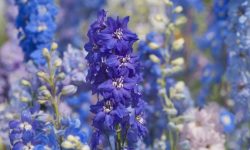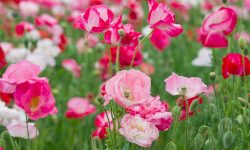Coneflowers, scientifically known as Echinacea, are among the most cherished perennial flowers in North American gardens. Their resilience, bright colors, and ability to attract pollinators make them a popular choice for gardeners of all levels. But to truly enjoy their full blooming potential throughout the season, deadheading becomes a key task. Learning how to deadhead coneflowers properly can result in a more vibrant display that lasts for months, extending well into fall.
Deadheading is more than just a cosmetic touch-up. It’s a gardening technique that channels the plant’s energy into producing more blooms instead of seeds. This process not only beautifies your garden but also contributes to the overall health and longevity of your coneflower plants.
In this guide, you’ll discover how to deadhead coneflowers for a longer bloom and why it’s essential for maximizing their performance.
Understanding the Lifecycle of Coneflowers

To deadhead effectively, it’s important to understand how coneflowers grow and bloom. Coneflowers typically start blooming in early to midsummer and can continue flowering into the early fall. Each flower head emerges from a strong, upright stem and consists of a central cone surrounded by ray-like petals that come in colors like purple, pink, white, yellow, or orange.
Once a flower blooms, it will stay vibrant for several days or weeks, depending on the growing conditions and variety. Eventually, the petals begin to fade, wilt, or fall off, while the central cone darkens and begins to produce seeds. If left untouched, the plant shifts its focus from flowering to seed production, often slowing down or even stopping new blooms altogether.
This is where deadheading comes into play. By removing spent blooms at the right time, gardeners can trick the plant into thinking it still needs to reproduce, thereby encouraging the development of more flowers. This cycle of cutting and regrowth keeps the plant active and blooming much longer than it would naturally.
Why Deadheading Coneflowers Is Important
Deadheading serves multiple purposes in the life of a coneflower. While the primary goal is to extend the blooming period, the benefits go beyond just appearance. By eliminating dead or fading flowers, you help prevent the plant from investing energy into seed formation. This redirection of energy encourages the growth of new buds and results in more blooms throughout the season.
Moreover, deadheading improves the plant’s overall health. Spent flowers can sometimes harbor moisture or diseases, especially in humid climates. Removing them reduces the chances of fungal infections or decay spreading through the plant. Additionally, keeping the plant neat and tidy improves air circulation and minimizes hiding spots for pests.
Another often overlooked benefit of deadheading is its role in garden aesthetics. Coneflowers that are regularly groomed look more vibrant and orderly, adding visual interest and appeal to your landscape. This is especially valuable in formal garden settings or when coneflowers are used as a focal point among other flowering species.
When to Start Deadheading Coneflowers
Timing is crucial when it comes to deadheading. The best time to begin deadheading coneflowers is when the first round of blooms starts to fade or wilt. This typically happens in midsummer, though it may vary depending on your climate and specific variety. Watch for petals that are drying up or beginning to droop, and check the central cone for signs of darkening or seed development.
It’s not necessary to deadhead every single day. Instead, you can walk through your garden once or twice a week and inspect the coneflowers for fading blooms. Performing this task regularly ensures that you catch the spent flowers early, which improves your chances of encouraging more blooms. Deadheading too late may reduce its effectiveness, as the plant may have already committed energy to seed production.
You can continue deadheading throughout the summer and into early fall, depending on how long your growing season lasts. In regions with mild autumns, coneflowers may continue blooming well into October if properly maintained. Once the plant stops producing new buds or the weather turns cold, deadheading is no longer necessary.
Tools and Techniques for Effective Deadheading
Although deadheading can be done with your fingers, using the right tools makes the process quicker, cleaner, and more precise. A pair of sharp, clean garden scissors or pruning shears is ideal for snipping stems without damaging the plant. Dirty or dull blades can bruise the stem, which may hinder new growth or open the plant up to disease.
To deadhead a coneflower correctly, identify the flower head that is fading or has already withered. Follow the stem down to just above the nearest leaf node or lateral bud. This is the point where new growth is most likely to occur. Make a clean cut about a quarter-inch above this node. Avoid cutting too close, as this could damage the bud, and steer clear of leaving long stubs that may rot.
Be gentle during the process to avoid bending or breaking nearby stems or new buds. If you’re unsure whether a flower is fully spent, wait a few days until the petals have clearly wilted. Coneflowers are forgiving plants, and it’s better to wait slightly than to remove a bloom too early.
Cleaning your tools after each session also reduces the risk of spreading disease between plants. A quick wipe with rubbing alcohol or a diluted bleach solution keeps your pruners sanitary and ready for the next use.
Encouraging Rebloom After Deadheading
After removing faded flowers, the plant will shift its energy back into producing new buds. To support this reblooming process, it’s helpful to provide consistent care in the weeks following deadheading. Water the plant deeply, especially during dry spells, and ensure the soil drains well to avoid root rot.
Feeding the plant with a balanced fertilizer can also enhance flower production. Choose a product that supports blooming, typically one with a slightly higher phosphorus content. Apply it according to the manufacturer’s instructions, usually every four to six weeks during the growing season.
Keep an eye out for new buds emerging from the leaf axils below the cut sites. These small nodes will develop into new stems and flowers, ensuring your coneflowers stay lively and colorful throughout the season. With each round of deadheading and regrowth, the blooming cycle is extended, often doubling the plant’s visual appeal over the course of the summer.
When to Stop Deadheading Coneflowers
Although deadheading is beneficial during the peak growing season, there comes a time when you should stop. As the season winds down and temperatures begin to cool, your coneflowers will naturally reduce their flowering activity. In late fall, it’s advisable to stop deadheading and let the final blooms go to seed.
There are several reasons for this. First, the seed heads of coneflowers are a valuable food source for birds like finches during the colder months. Leaving some flower heads intact provides natural foraging opportunities and supports local wildlife. Second, the seed heads also add visual interest to the winter garden, catching frost and snow in elegant, architectural shapes.
Additionally, letting some flowers go to seed can support self-seeding, allowing the plant to propagate naturally. If you prefer a more controlled garden, you can collect the seeds yourself once the heads dry out and store them for spring planting. Otherwise, simply enjoy the natural cycle and see where new coneflowers might pop up next season.
Common Mistakes to Avoid While Deadheading
Although deadheading is straightforward, a few common mistakes can limit its effectiveness. One of the most frequent issues is cutting too low or too high on the stem. Cutting too low can damage the plant’s structure, while cutting too high above a node can leave a stub that doesn’t produce new growth.
Another mistake is waiting too long to remove spent blooms. Once a flower begins forming seeds, the plant’s hormonal signals shift, reducing the chances of additional blooming. By catching the blooms early in their decline, you maximize the potential for a second or third round of flowering.
Avoid deadheading every flower if your goal is to support wildlife or encourage reseeding. It’s perfectly acceptable to leave a few seed heads on the plant while continuing to deadhead the rest. This approach allows you to balance aesthetics, pollinator support, and practical propagation.
Finally, neglecting overall plant health can reduce the benefits of deadheading. Even if you remove faded flowers diligently, the plant still needs proper sunlight, nutrients, and water to bloom repeatedly. Think of deadheading as part of a holistic care routine rather than a magic solution on its own.
Best Coneflower Varieties for Continuous Blooming
Some varieties of coneflowers respond more enthusiastically to deadheading than others. Modern cultivars have been bred for prolonged flowering and vibrant colors, making them ideal choices for gardeners who prioritize extended bloom time. Varieties like Echinacea purpurea ‘Magnus’, ‘PowWow Wild Berry’, and ‘Cheyenne Spirit’ are known for their repeat blooming habits when deadheaded regularly.
These varieties also tend to have sturdy stems and larger blooms, which hold up well during the deadheading process. Gardeners looking for long-lasting color displays often prefer these types because they bounce back quickly and produce abundant new buds. By choosing the right cultivar and combining it with proper care, the benefits of deadheading are even more pronounced.
If you’re planting coneflowers specifically for reblooming potential, check plant labels or consult nursery staff to ensure you’re selecting a variety that performs well with frequent grooming. Over time, you’ll discover which ones respond best to your specific garden conditions and routine.
Deadheading and Seasonal Garden Planning
Deadheading isn’t just about the current season; it also plays a role in shaping next year’s garden. By managing your coneflowers with care and attention throughout the summer and fall, you create a stronger, healthier plant foundation for the following spring. Deadheaded plants tend to develop bushier, more robust growth, setting the stage for earlier and more abundant blooming the next year.
As part of your seasonal planning, you can track how different coneflower varieties respond to deadheading. Keeping notes on bloom times, regrowth speed, and flowering cycles will help you fine-tune your approach and achieve even better results with each passing season.
FAQs About Deadheading Coneflowers
What is deadheading, and why should I do it to coneflowers?
Deadheading is the process of removing faded or spent blooms from a plant. For coneflowers, deadheading helps redirect the plant’s energy from seed production to new flower formation. This encourages more blooms, enhances plant health, and keeps the garden looking tidy throughout the season.
When should I start deadheading my coneflowers?
You should begin deadheading when the first flowers start to fade—usually in midsummer. Look for petals that are wilting or have fallen off, and remove the flower head before it begins forming seeds. Deadheading at the right time maximizes the chance for a second or even third round of blooms.
How often should I deadhead coneflowers?
Inspect your coneflowers once or twice a week during the blooming season. Regularly removing spent blooms helps maintain steady flower production. There’s no strict schedule, but consistency is key to keeping the plants blooming longer.
Do I need special tools to deadhead coneflowers?
While you can pinch off blooms with your fingers, it’s best to use clean, sharp pruning shears or scissors. This ensures a clean cut and minimizes damage to the plant. Always cut just above a leaf node or bud to encourage new growth from that point.
Should I deadhead coneflowers in the fall?
In late fall, it’s better to stop deadheading. Allowing some flowers to go to seed provides food for birds and supports natural reseeding. The seed heads also add visual interest to winter gardens and help encourage self-propagation for the next growing season.
Conclusion
Deadheading coneflowers is one of the most effective techniques for extending their bloom time and keeping your garden in peak condition. By understanding the lifecycle of coneflowers, using the right tools, and cutting with precision, you can encourage multiple waves of stunning, pollinator-friendly flowers from early summer into fall.
More than a maintenance task, deadheading becomes a way to interact with your plants, guiding their growth and enhancing their beauty. Whether you’re a seasoned gardener or just beginning your journey with perennials, learning how to deadhead coneflowers for a longer bloom is a simple yet transformative skill that rewards you with color, vitality, and joy all season long.






